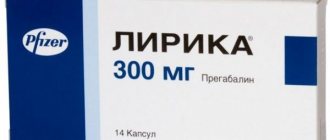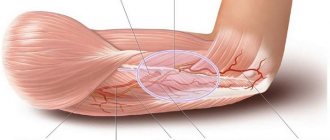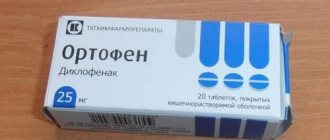The disease, known medically as nasociliary neuralgia, was first described by the Chilean ophthalmologist Charlin in the early 30s of the twentieth century.
The occurrence of the disease is caused by damage to one of the branches of the optic nerve located in the upper part of the orbit.
Its fiber has connections with the trigeminal and oculomotor nerve fibers, as well as with the perivascular plexuses of the carotid artery and the sympathetic ciliary ganglion.
The cause of the pathological process may be:
- inflammation in the sinuses;
- atherosclerotic changes in the carotid artery;
- hypertrophy of the nasal concha;
- dental diseases and maxillofacial pathologies;
- diseases affecting the ciliary ganglion and the nasociliary nerve itself.
Charlin's syndrome is more common in young women. Exacerbations of the disease can be followed by long-term remission (up to 5 years).
We will consider the symptoms and treatment of nasociliary neuralgia in more detail below.
Symptoms
The full picture of nasociliary nerve syndrome with the presence of all possible symptoms for this disease is recorded in very rare cases. In medical practice, cases of bilateral neuralgia are rarely encountered.
Approximately 90% of all recorded cases of this pathology are unilateral. Exacerbation of the disease is expressed by symptoms inherent in the pathology of one section (branch) of the nerve: the subtrochlear or long ciliary.
With neuralgia of the subtrochlear branch, the patient may be bothered by the following symptoms:
- redness of the conjunctiva;
- pain in the eyeball when affecting the inner corner of the eye.
With neuralgia of the long ciliary nerves, the patient experiences more varied symptoms:
- tightening paroxysmal pain inside or behind the eyeball, worsening in the morning;
- photosensitivity;
- hyperemia of the eye mucosa;
- lacrimation;
- inability to fully open the eyelids (the eye is constantly squinted);
- swelling of soft tissues located in close proximity to the eye;
- decreased or complete absence of conjunctival and corneal reflexes;
- slow or complete absence of pupil reaction to light;
- sharp pain when trying to touch the eye.
An exacerbation of nasociliary neuralgia with the manifestation of the above symptoms can last quite a long time, and periods of remission can reach several years.
Symptoms of ganglionitis of the pterygopalatine ganglion
The disease lasts a long time (months or years), periodically severe exacerbations occur (especially in the autumn-spring period, when the immune system is weakened, after stress or excitement).
One of the first symptoms will be paroxysmal severe pain in half of the face, which is accompanied by a burning sensation and shooting. Mostly painful sensations occur in the eye, behind the eye, in the teeth, in the upper and lower jaws, in the bridge of the nose, tongue and palate. The pain syndrome can spread to the occipital area, parotid region, ear, neck, forearm, shoulder blades, even to the fingertips and hand area. The most painful sensations occur in the bridge of the nose and mastoid process. Depending on the severity and duration of the disease, pain may be present for several hours, days or even weeks. Exacerbation of pain syndrome often occurs at night. Patients report sensations of tickling in the nose, sneezing, runny nose, active salivation, sweating, dizziness, nausea, and watery eyes.
A characteristic symptom of this disease is the so-called “vegetative storm”, which manifests itself in the form of swelling and redness of the face, profuse lacrimation and salivation, and shortness of breath. Moreover, saliva is often released so much that it involuntarily flows out of the patient’s mouth. The person is forced to use a towel. Sometimes there is an increase in temperature and secretion from the nose. In some cases, taste bud disorders and asthma-like attacks may occur. At the peak of attacks, the eyes become very sensitive not only to bright light, but also to lighting in general, swelling of the upper eyelid occurs, sometimes intraocular pressure increases and exophthalmos occurs. Often pain points are identified in the inner part of the corner of the eye, the root of the nose. In some cases, paresis of the muscle that raises the soft palate occurs.
Diagnostics
Diagnosis of Charlin's syndrome is a complete examination of the patient to determine the true causes of pain and discomfort.
In this case, specialists need to confirm the absence of such serious pathologies as trigeminal neuralgia, acute glaucoma, sinusitis, dental caries or other dental diseases of the upper jaw.
The greatest value in diagnosing the disease is the application of a special composition containing cocaine hydroxide to the nasal mucosa. In this case, there should be a rapid regression of all symptomatic manifestations of the disease. This reaction allows us to speak with 100% certainty about the presence of Charlin's syndrome in the patient.
Neuralgia, regardless of location, is accompanied by acute pain. Neuralgia of the shoulder joint can occur as a result of hypothermia or excessive physical exertion. Timely treatment will help to completely get rid of this unpleasant disease.
You will learn how to recognize neuralgia in a newborn baby here.
Persistent pain when swallowing and frequent migraines are a sure sign of neuralgia of the glossopharyngeal nerve. In this topic https://neuro-logia.ru/zabolevaniya/nevralgiya/yazykoglotochnogo-nerva.html we will take a closer look at the symptoms of this disease.
What diseases should not be confused with?
Differential diagnosis, excluding diagnoses with similar symptoms. Charlin's syndrome should be distinguished from:
- inflammation of the sinuses, nasal cavity,
- ganglionitis of the pterygopalatine ganglion (the pain goes away when the posterior part of the nasal cavity is lubricated with a cocaine solution. And with inflammation of the nasociliary nerve in the anterior part),
- neuralgia of the maxillary nerve (burning pain under the eye and upper jaw),
- ganglionitis of the ciliary ganglion (pain radiates to the forehead, temple, root of the nose, forearm, neck).
Treatment of the disease
Treatment of nasociliary nerve neurosis consists of eliminating the disease that affects it.
In case of inflammatory processes in the ENT organs, patients are prescribed a course of treatment with antibiotics and a set of drugs that affect the elimination of inflammation and restoration of the mucous membrane, or surgical intervention (for pathologies of the nasal septum).
For vascular diseases, patients are prescribed drugs with antihypertensive and nootropic effects. Treatment is also carried out using vasoactive drugs.
To relieve pain and other symptomatic and clinical manifestations of neuralgia, local anesthetic drugs are used in medical practice in combination with non-narcotic painkillers and vasodilators. Their use is determined by which part of the nasociliary nerve has undergone pathological effects:
- For neuralgia of the long ciliary nerve, dicaine (0.25% eye solution) mixed with adrenaline (4 drops per 10 ml of solution) is used.
- For neuralgia of the subtrochlear region of the nasociliary nerve, cocaine hydrochloride (2% solution) mixed with 0.1% adrenaline (4 drops per 5 ml of the drug) is used. A solution of lidocaine is also used in the form of a spray, which is injected into the nasal passages on the corresponding side or both at once (for bilateral neuralgia) up to 4 times a day.
- If any part of the nerve is damaged, use a powder mixture of papaverine, glucose, antispasmodic, diphenhydramine and aminazine 2 times a day.
As an additional therapy for patients diagnosed with Charlin's syndrome, a course of intramuscular vitamin B12 is indicated, as well as intravenous administration of sulfonamide drugs.
Unpleasant chest pain is often a sign of heart disease. But a similar symptom is also characteristic of neuralgia. A competent specialist should be able to distinguish the signs of neuralgia in the heart area from heart pain. Read the article about how to treat this disease.
We will consider the causes and symptoms of trigeminal neuralgia in this topic.
Classification of the disease
Charlin's syndrome occurs in two forms:
- Typical neuralgic , occurs when the main nerve trunk is damaged. The clinical picture is classic, that is, the symptoms correspond to the disease. Watery eyes, sore nose and eye area,
- Erased hyperpathic . The nasociliary nerve has a main trunk and small branches. When these nerve endings become inflamed, the picture becomes blurred. Symptoms become atypical. Sensitivity may simply be lost or perception may increase.
Neuralgia can also be unilateral or bilateral. It is divided into acute, subacute and chronic forms.
CHARLINA SYNDROME
CHARLINA SYNDROME
(C. Charlin, Chilean ophthalmologist, born in 1886, synonym: neuralgia of the nasociliary nerve, nasal nerve syndrome, ciliary ganglion syndrome, naso-ethmoid-ocular syndrome, Charlin-Slader syndrome) - a combined lesion of the nasociliary nerve and sympathetic ciliary ganglion, manifested attacks of pain and various autonomic disorders in the corresponding areas of innervation. Described in 1931 by Charlin.
Charlin's syndrome develops with damage to the nasociliary nerve (n. nasociliaris) - one of the branches of the optic nerve (p. ophthalmicus) and the sympathetic ciliary ganglion (gangl. ciliare), located at the apex of the orbit and associated with the perivascular sympathetic plexus of the internal carotid artery (see Autonomic nervous system), oculomotor nerve (see) and trigeminal nerve (see).
In the development of Charlin's syndrome, inflammatory processes in the paranasal sinuses (sinusitis), hypertrophy of the nasal turbinates, curvature of the nasal septum, diseases of the dental system, atherosclerosis of the internal carotid artery, vasculitis (especially allergic) and other pathological processes that involve the nasociliary nerve, and often the ciliary (ciliary) node.
A feature of the syndrome is the onset of pathological phenomena at the age of about 40 years.
Clinically, Charlin's syndrome manifests itself as attacks of excruciating pain in the eyeball, in the area of the eyebrow and the corresponding half of the nose. Pain often occurs at night and is accompanied by photophobia (see), conjunctival hyperemia, profuse lacrimation, swelling of the nasal mucosa and the release of liquid secretion on the affected side. A painful attack can sometimes last a day or more. There is pain on palpation in the area of the inner corner of the eye. Herpetic keratitis and iridocyclitis often develop, and rashes appear on the skin of the nose, forehead, conjunctiva, and cornea (see Herpes). Bilateral manifestation of the syndrome is possible.
A detailed clinical picture is rarely observed. Usually, erased forms with less pronounced wedge symptoms are observed. Features of the wedge, patterns are determined by the predominance of symptoms of damage to various branches of the nasociliary nerve - the long ciliary nerves or the subtrochlear nerve. When the long ciliary nerves are damaged, paroxysmal pain of a tightening nature in the eyeball or in the depths of the orbit is characteristic. Pain occurs in the evening or morning, lasts for hours or days and is accompanied by hyperemia of the conjunctiva of the eye, swelling around the eyes, photophobia, lacrimation, frequent blinking, narrowing of the palpebral fissure, decreased or absent corneal and conjunctival reflexes, impaired pupillary response to light and local pain on palpation. With the predominance of damage to the subtrochlear nerve, there is mainly pronounced hyperemia of the conjunctiva and sharp pain on palpation in the area of the inner corner of the eye. In cases where the ciliary node is involved in the pathological process, the pain syndrome is combined with herpetic rashes. Charlin's syndrome is characterized by a chronic course with long-term (2-3 years) remissions.
The diagnosis is not difficult. Improvement or rapid regression of symptoms when lubricating the nasal mucosa on the affected side with a 5% solution of cocaine hydrochloride serves as a differential diagnostic sign of Charlin's syndrome and allows differential diagnosis with trigeminal neuralgia (see), Slader's syndrome (see Slader's syndrome), acute glaucoma (cm.).
Treatment is aimed at the underlying disease against which the syndrome developed. For sinusitis, anti-inflammatory therapy is carried out; for vascular pathology, vasodilators, antihypertensives, anti-atherosclerotic drugs, and multivitamins are prescribed; For hypertrophy of the nasal turbinates and curvature of the nasal septum, surgical intervention is indicated.
During an attack, local anesthetics, non-narcotic analgesics, vegetotropic and vasodilators are used. If the long ciliary nerves are damaged, it is recommended to instill 1-2 drops of a 0.25% solution of dicaine with adrenaline into the conjunctival sac (3-5 drops of a 0.1% solution of adrenaline hydrochloride per 10 ml of dicaine solution). If the subtrochlear nerve is damaged, lubricate the nasal mucosa at the exit site of the nerve above the superior turbinate with a 2% solution of cocaine hydrochloride with adrenaline (3-5 drops of 0.1% solution of adrenaline hydrochloride per 5 ml of cocaine solution). In both cases, the duration of treatment is 5-7 days. Diadynamic currents to the eyebrow area are shown.
The prognosis is determined by the nature of the underlying pathological process leading to the development of Charlin syndrome. Compared with trigeminal neuralgia, Charlin syndrome has a more favorable prognosis.
Prevention consists of timely and systematic treatment of sinusitis, diseases of the dental system and other processes that cause Charlin's syndrome.
Bibliography: Grechko V. E. Emergency care in neurostomatology, p. 41, M., 1981; Guba G.P. Directory
on neurological semiology, p. 120, Kyiv, 1983; C h a g 1 in C. El sindrome del nervio nasal y sus formas larvadas, Dia med., v. 4, p. 35, 1931; aka, Le syndrome du nerf nasal, Ann. Oculist. (Paris), t. 168, p. 86, 1931; Sluder G. Nasal neurology, headaches, and eye disorders, St. Louis, 1927. V. E. Grechko.











